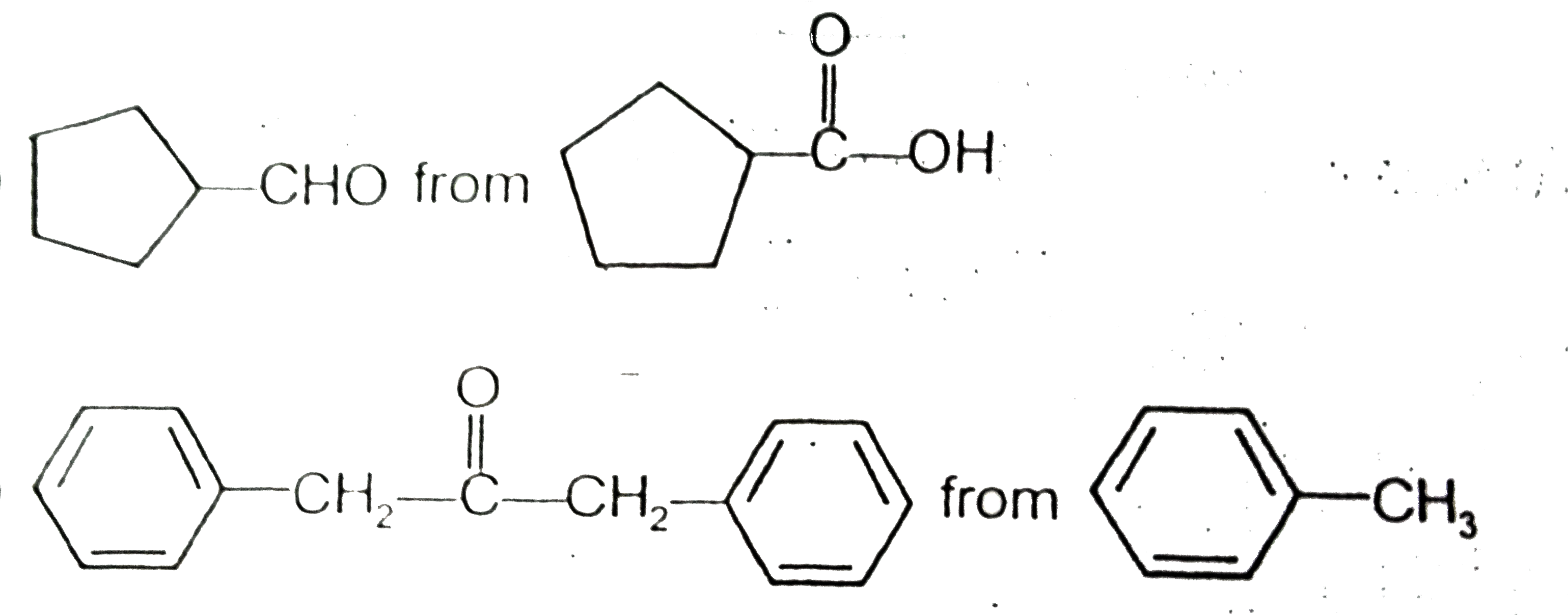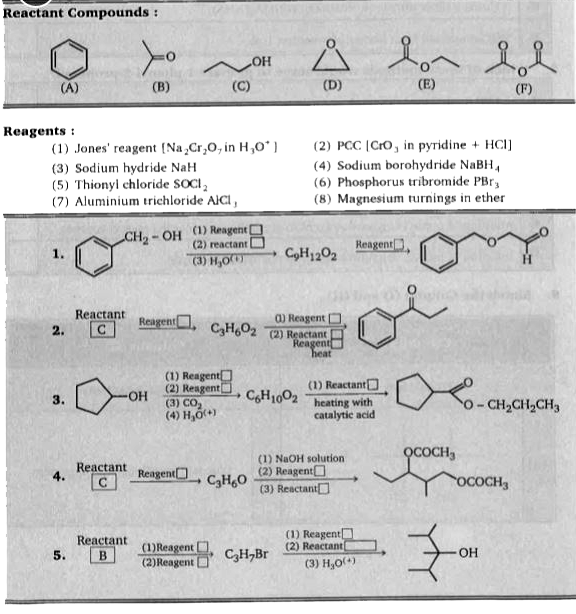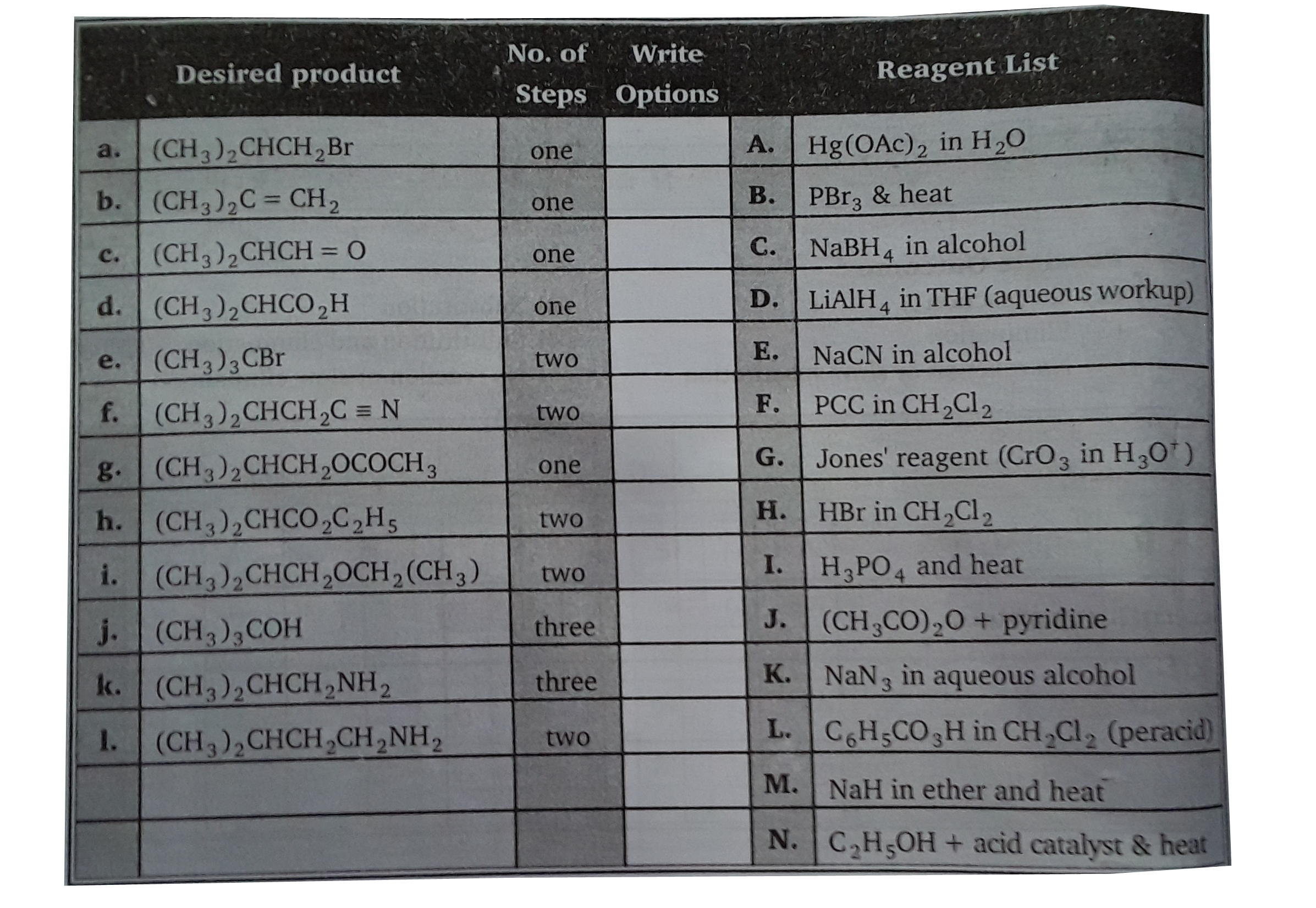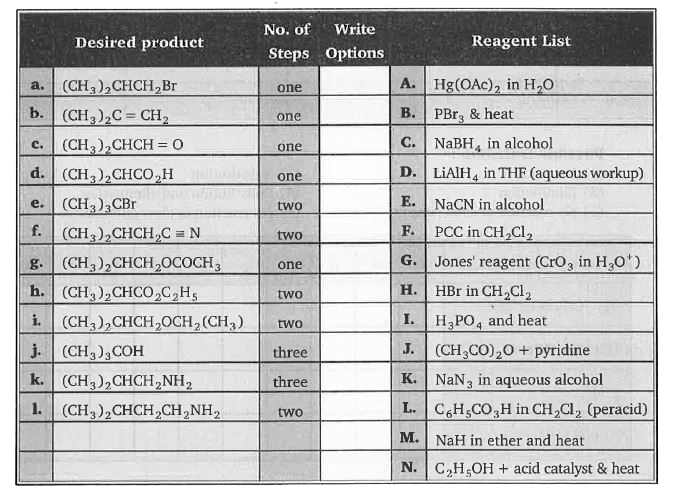Suggest a multi step synthesis for each of these compounds , starting with benzene and any other reagents you need. Indicate with an asterisk each step where a separation of positional isomers might be necessary.

Since we start with benzene and ultimately generating the para isomer of the product, we must at some point perform as EAS reaction with an ortho/para director already in place. Unfortunately , both −CO2H and −NO2 are meta directors. So, one or the other must have arisen from ortho/para director during the synthesis. The only way we have seen so far to make a −CO2H group involves KMnO4 oxidation of an alkyl group, which is an ortho/para director. Therefore, a logical synthetic sequence would be

If we had nitrated first , then alkylated and oxidized, the meta isomer would have been the predominant product.
(b) Since we generate the meta isomer in this case, we need to perform an EAS at some points with a meta director already in place. But both groups on the ring are ortho/para directors. Let.s see if we can devise a logical sequence using "retro" (backward) synthetic analysis , one that involves a meta director ultimately transformed into an ortho/para director. The logical last step in the synthesis would be benzylic bromination.

The meta bromine could arise via diazotization of the corresponding amine which, in turn, could result from reduction of a nitro group(a meta director)

Now,all we have to do is alkylate nitrobenzene. Unfortunately, Friedel-Crafts alkylations of deactivated ring usually fail because the catalyst coordinates to the electron-withdrwaing substituted rather than the alkyl halide. To avoid ths prob, the alkylation can be performed as follows:

In this case,H2SO4 catalyst protonates the OH group ethanol, resulting in the transfer of "CH3CH+2" to the meta position of the ring.
Topper's Solved these Questions
- ELECTROPHILIC AROMATIC SUBSTITUTIONBOOK - FIITJEECHAPTER - ELECTROPHILIC AROMATIC SUBSTITUTIONEXERCISE - SOLVED PROBLEM (OBJECTIVE)
13 Videos
- ELECTROPHILIC AROMATIC SUBSTITUTIONBOOK - FIITJEECHAPTER - ELECTROPHILIC AROMATIC SUBSTITUTIONEXERCISE - SOLVED PROBLEM (COMPREHENSION -I)
4 Videos
- ELECTROPHILIC AROMATIC SUBSTITUTIONBOOK - FIITJEECHAPTER - ELECTROPHILIC AROMATIC SUBSTITUTIONEXERCISE - NUMERICAL BASED QUESTIONS INDICATED BY DIGITAL INTERGER
1 Videos
- ELECTROCHEMISTRYBOOK - FIITJEECHAPTER - ELECTROCHEMISTRYEXERCISE - Matcing Type Single Correct Questions
3 Videos
- ENVIRONMENTAL CHEMISTRYBOOK - FIITJEECHAPTER - ENVIRONMENTAL CHEMISTRYEXERCISE - ASSIGNMENT PROBLEMS (OBJECTIVE) LEVEL -II (MULTIPLE CORRECT QUESTIONS)
20 Videos
Similar Questions
Propose a synthesis of each of the following compounds from the indicated starting materials (s) and any other necessary reagents.

View SolutionThis problem is an introduction to the planning of multistep syntheses
For use, you have six reactant compounds (A through F) , and eight reagents (1 through 8), shown below
Following these lists, five multistep syntheses are outlined. For each of these, certain reactants or reagents must be identified by writing an appropriate letter or number in designated answer boxes. Write a single letter or number, indicating your choice ofthe best reactant or reagent, in each answer box.

View SolutionIsobuty alcohol (2 -mehyl 1 -1-propanol), (CH3)2CHCH2OH, can be transformed to each of the compounds (a through 1) listed in the left-hand column. In each case the number of steps the needed to accomplish the change is noted, and an answer box is noted, and answer box is provided for your reagent selections. Fourteen reagents (designated A through N) are listen in the right -hand column. corresponding to the desired compound.
Write letters desiganating the raagent or reagents you believe will achieve the desired transformation in the box to the right of the product formula. In the case of a multi-step sequence write the reagents in the order they are to be used. In some cases you may wish to use a previously prepared compound as a reactant. If so, write the number (a to 1) corresponding to the desired compound.
View SolutionIsobutyl alcohol (2-methyl-1-propanol) (CH3)2CHCH2OH, can be transformed to each of the compounds (a through 1) listed in the left-hand column. In each case the number of steps needed to accomplish the change is noted, and an answer box is provided for your reagent Write letters designating the reagent or reagents you believe will achieve the desired transformation in the box to the right of the product formula. In the case of a multi-step sequence write the reagents in the order they are to be used. In some cases you maywish to use a previously prepared compound as a reactant. If so, write the number (a to 1) corresponding to the desired compound.

View SolutionTwo bodies of masses m1 and m2 are initially at infinite distance at rest. Let they start moving towards each other due to gravitational attraction. Calculate the (i) ratio of accelerations and (ii) speeds at the point where separation between them becomes r.
View SolutionStarting from each of the following reactants, how would you obtain the relevant product is not more than two steps ?
Zinc sulphide to sulphur dioxide.
View SolutionStarting from each of the following reactants, how would you obtain the relevant product is not more than two steps ?
Zinc blende to zinc.
View SolutionHow would you synthesis 4-methoxyphenol form bromobenzene in NOT more than five step ? State clearly the reagents used in each step and show the structure of intermediate compounds in your synthetic scheme.
View SolutionHow would you synthesis 4-methoxyphenol form bromobenzene in NOT more than five step ? State clearly the reagents used in each step and show the structure of intermediate compounds in your synthetic scheme.
View SolutionHow would you synthesise 4-methoxyphenol from
bromobenzene in not more than five steps? State clearly the
reagents used in each step and show the structure of the intermediate compounds in your synthetic scheme.
View Solution
